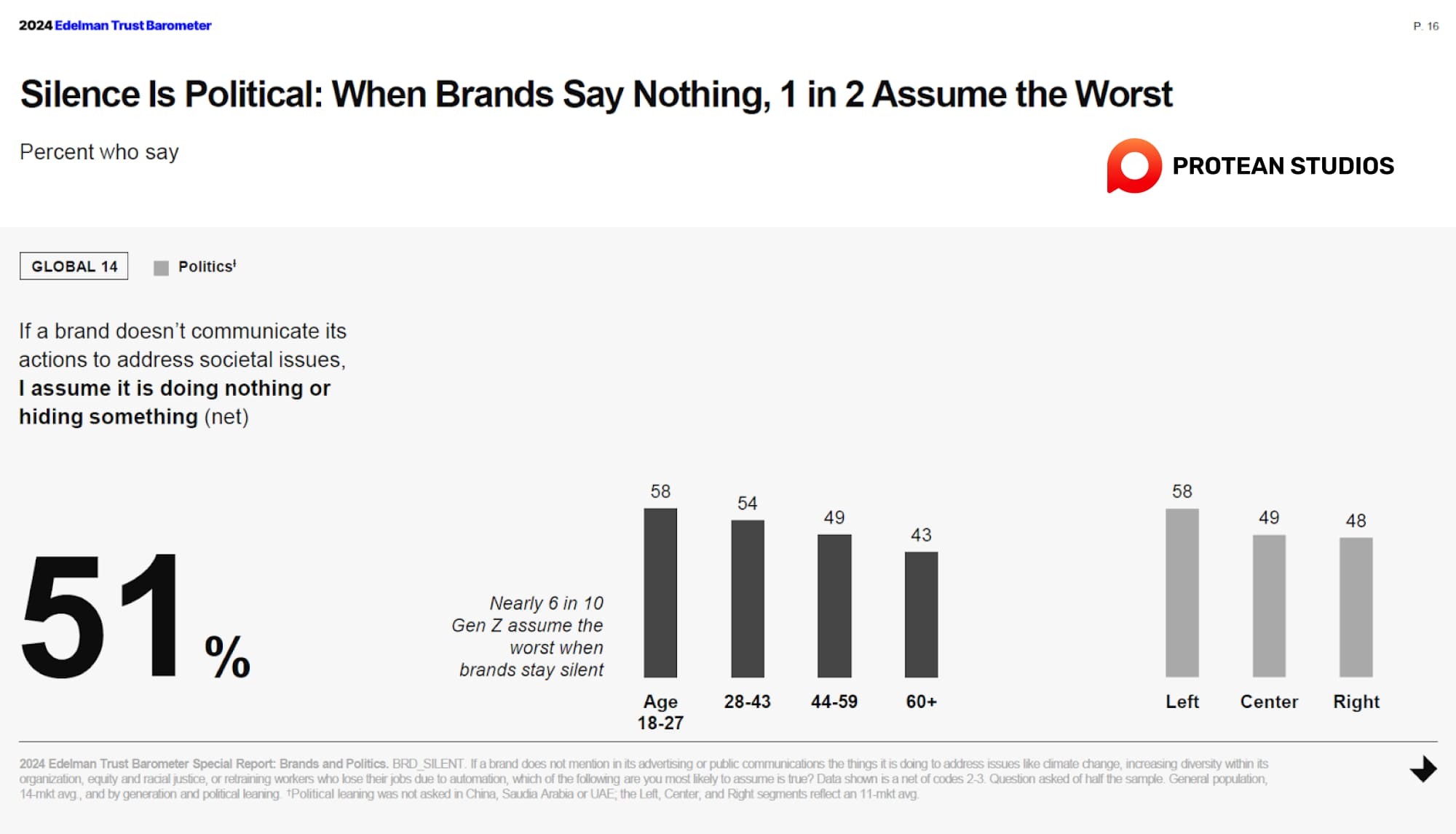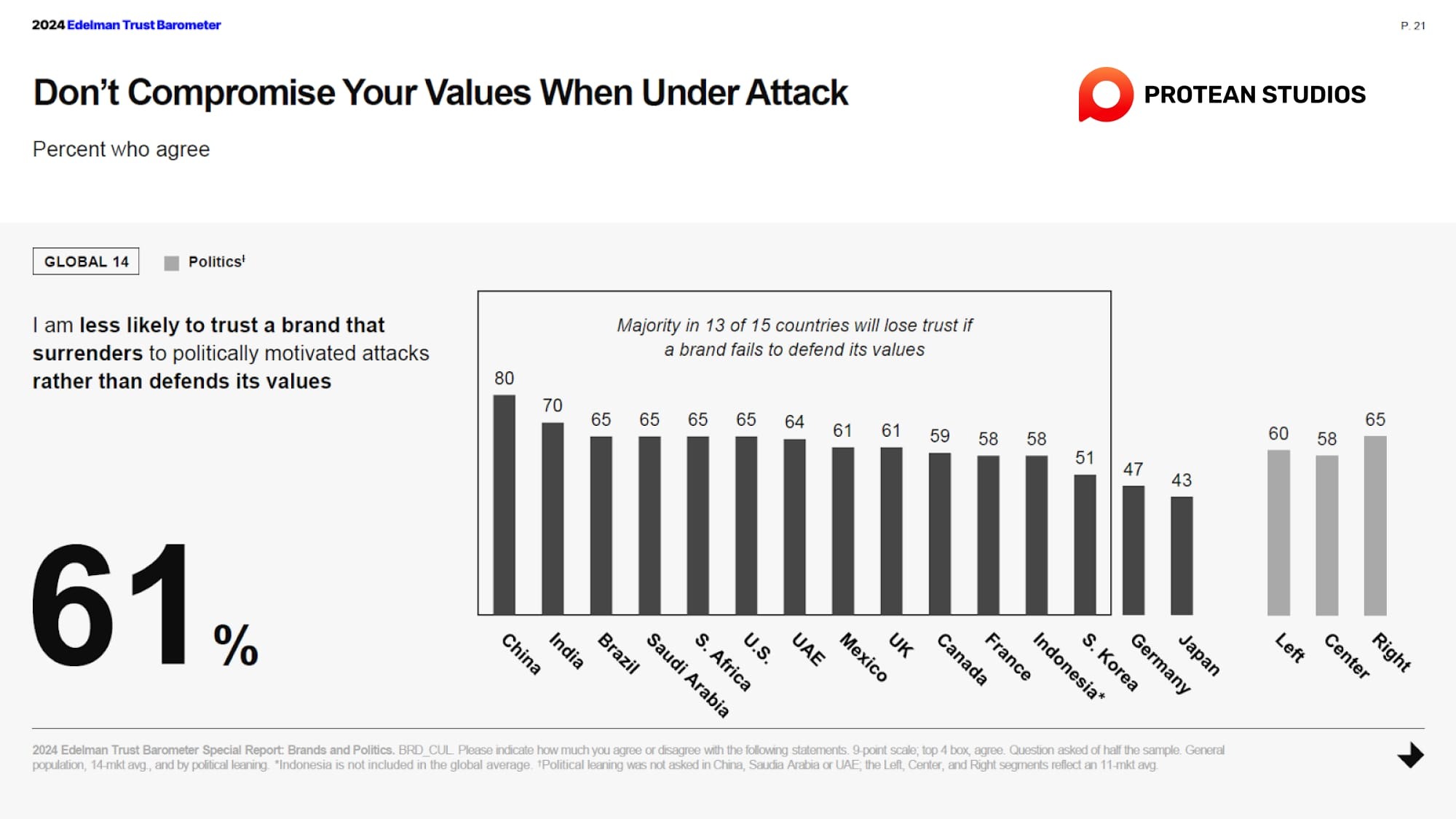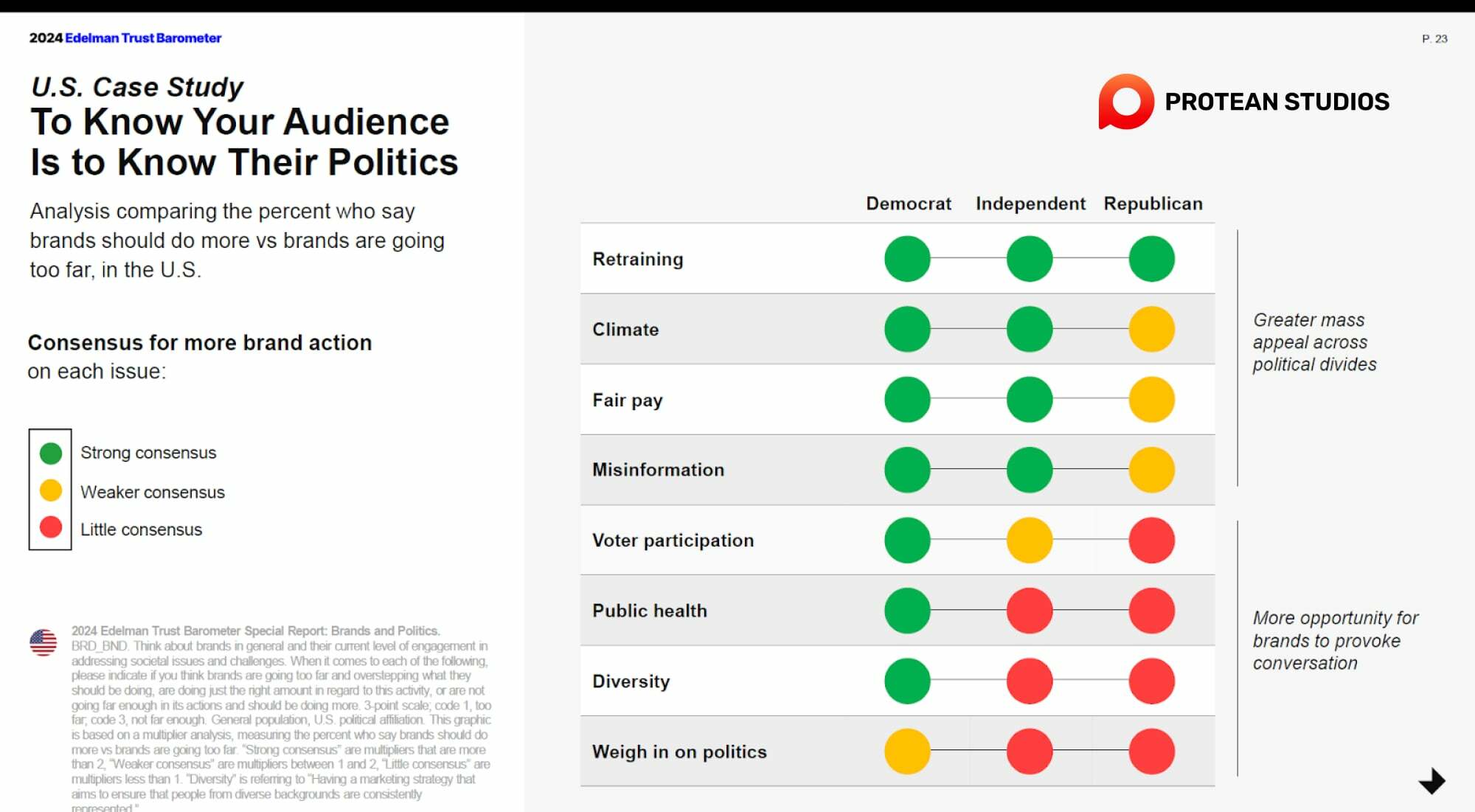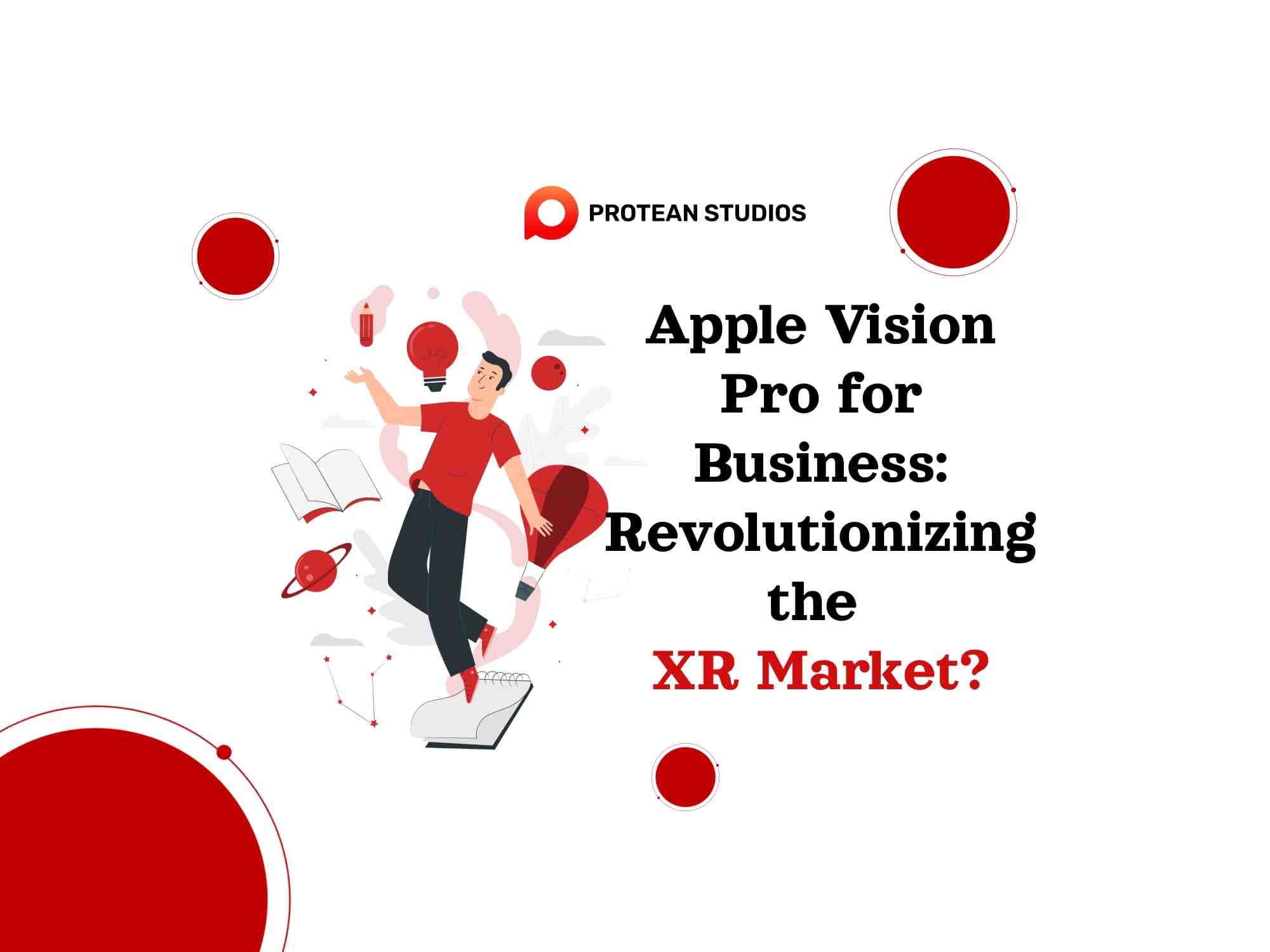In an age dominated by social media, instant news cycles, and heightened consumer awareness, businesses face a unique challenge: navigating a landscape fraught with outrage. This blog, Marketing Strategies in an Era of Outrage, delves into the complexities of consumer sentiment and its profound impact on brand reputation and marketing effectiveness.
Some things are more political than others
Not all current events get the same level of support from people. Gallup found that Americans are most supportive of companies talking about climate change (55%) and mental health (52%). Yet, they are against companies taking public stands on religion (15%), political candidates (19%), and abortion (26%).
The 2024 Edelman Trust Barometer shows that 54% of U.S. consumers now buy, choose, or avoid brands because of politics, up from 52% last year.
Say nothing?
Given all this, it's understandable why some companies choose to stay silent.
“Brand safety is important,” said Ortman. “We have clients who feel that marketing during certain unfavorable times is too risky. So, they may pull back from certain marketing channels or tactics, or even stop marketing altogether for a period of time.”
This approach was seen after 9/11, during the mortgage meltdown and recession around 2008, and most in 2020 at the start of the pandemic. However, those were events that most Americans agreed on. Remaining silent on highly divisive issues can also be costly.

The Edelman survey of people in 15 nations found that 51% of the 15,000 respondents assume the worst if a company remains silent on a major topic. This number increases to 56% in the key 18 to 44 age demographic.
Under attack
Right-wing commentators, politicians, and celebrities—including Caitlyn Jenner, who is also a transgender woman—flocked to the issue like moths to a flame. Mulvaney, the brand’s head of marketing, and at least one Bud Light brewery were targeted with violent threats. Alongside these threats, an effective boycott ensued.
Two weeks after Mulvaney’s post, Bud Light’s sales dropped by 17%. Within a month, Bud Light lost its position as the best-selling beer in America, a title it had held for two decades. By the end of that quarter, Anheuser-Busch reported a 10.5% decline in US revenue. Four months after the initial post, by the end of August last year, sales were down 27% year-on-year. Although sales began improving in April, they remain well below pre-boycott levels.
How could this have been avoided?
In marketing, understanding your customer is paramount. A key question is whether Budweiser conducted any market research on this topic. “For very mature brands like Budweiser, I would recommend an exhaustive level of research beforehand,” said Ortman. “I don’t know what research they did ahead of time. Who knows? It might have just been a marketing decision to target a new demographic and incorporate it into their strategy.”
Stick to your guns
As the crisis unfolded, Anheuser-Busch CEO Brendan Whitworth released a statement on the company’s website emphasizing the “importance of accountability” and the company’s responsibility to ensure that “every consumer feels proud.” This was the first of several lukewarm statements that managed to upset both critics and supporters.
Former Texas Agriculture Commissioner Jim Hightower once quipped, “There’s nothing in the middle of the road but a yellow stripe and dead armadillos.” Consumers appreciate companies that stand firm. The Edelman survey found that 65% of U.S. consumers would lose trust in a brand that succumbs to motivated attacks.

In 2016, San Francisco 49ers quarterback and Nike advertising icon Colin Kaepernick kneeled during the national anthem to protest police violence against Black people.
This sparked significant partisan outrage and ended Kaepernick’s football career. However, two years later, Nike renewed Kaepernick's contract and made him a central figure in their “Dream Crazy” campaign, which also featured active athletes like LeBron James, Serena Williams, and the U.S. women’s soccer team.
Remaining silent would have been a greater risk for Nike. As Alex Ortman stated, “If you have a loud voice and don’t speak on something as a brand, you better be prepared for people to ask your opinion.”
Ortman also noted, “If you want to speak on an issue and are not known for taking a stance, my main question to that business leader would be why now? And you better have a good reason. That reason should impact the business in a positive manner.”
Following the campaign launch, Nike’s stock price rose by 5%.
Stay true to yourself
The sports apparel giant is one of many brands—including Ben & Jerry’s, Patagonia, REI, and TOMS—that thrive by embracing distinct values. Authenticity is key.
“The safe position is authenticity,” said Levick. “In a divisive environment, you can’t please everyone. Brands that understand this focus on communities that support them, which drives growth and revenue.”
Authenticity means understanding your brand’s perception. Some executives fall into the Projection Fallacy, assuming everyone shares their views.
“Just because a CEO feels a certain way doesn’t mean customers do,” said Ortman. He suggests using outside experts to gain a fresh perspective. “Often, clients realize, ‘I hadn’t thought of that.’”

Avoid compromising your principles
Budweiser's attempt to please everyone failed, and it was obvious to everyone. Some companies have managed to calm the immediate backlash but have paid a long-term price.
Take Target, for example. They were criticized for supporting Pride month and selling Pride-themed items. In response, they removed these items from their stores but continued to sell them online.
“Target was a strong supporter of Pride and had a lot of backing from the LGBTQ+ community,” said an anonymous agency marketer. “Then, they decided not to celebrate in stores but kept it online. This sends the message that they’re willing to support Pride quietly, not publicly.”
Before the internet, brands could target specific audiences through channels like magazines, which were rarely seen outside those communities. Those days are over. Today, you have to assume that everyone will see all your marketing efforts, and some people are almost not going to like it.




